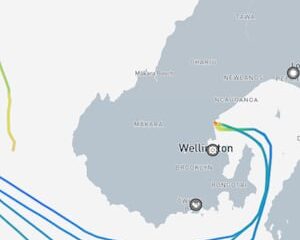Business
Job Ads Decline for Second Consecutive Month in New Zealand

Job advertisements in New Zealand have experienced a decline for the second consecutive month, according to data from employment website Seek NZ. In June, job ads fell by 3% compared to May and were also 3% lower than figures from the same month last year. This reduction in job listings coincides with indications that the country’s economic recovery is stalling as the year progresses.
Rob Clark, country manager for Seek, noted that job ad levels have remained largely flat over the past year. “While the volume remains below pre-COVID levels, there are pockets of growth, which should be cause for some optimism,” he stated.
Regional Variations in Job Advertisements
The decline in job ads was not uniform across the country. Regions such as Gisborne, Marlborough, and Southland were the only areas to report month-on-month growth in June. In contrast, major regions like Auckland and Canterbury experienced a 2% drop, while Wellington saw a more significant decrease of 4%. Otago remained unchanged, and Waikato reported a decline of 4% as well.
In terms of sector performance, the only industry to witness an increase in job volumes was the Information & Communication Technology sector, which saw heightened demand for positions such as ICT managers and networks and systems administrators. Clark highlighted that, despite the overall monthly dip, there has been a notable surge in demand within the government and defense sectors, which has jumped by 51% year-on-year. He expressed optimism about seeing a growing number of industries returning to annual growth, particularly within the professional and consumer services sectors.
Economic Context and Future Outlook
The recent trends in job advertising are reflective of broader economic conditions in New Zealand. Various economic datasets suggest that the country is experiencing a slowdown in its recovery phase. Despite the challenges, Clark’s comments about pockets of growth provide a glimmer of hope that certain sectors and regions may still be poised for expansion.
As New Zealand navigates this complex economic landscape, the performance of job ads in the coming months will be closely monitored by analysts and job seekers alike. The resilience shown by certain industries indicates that while challenges exist, opportunities for growth remain, potentially paving the way for a more robust employment market in the future.
-

 World3 weeks ago
World3 weeks agoPrivate Funeral Held for Dean Field and His Three Children
-

 Top Stories3 weeks ago
Top Stories3 weeks agoFuneral Planned for Field Siblings After Tragic House Fire
-

 Sports3 months ago
Sports3 months agoNetball New Zealand Stands Down Dame Noeline Taurua for Series
-

 Entertainment3 months ago
Entertainment3 months agoTributes Pour In for Lachlan Rofe, Reality Star, Dead at 47
-

 Entertainment2 months ago
Entertainment2 months agoNew ‘Maverick’ Chaser Joins Beat the Chasers Season Finale
-

 Sports3 months ago
Sports3 months agoSilver Ferns Legend Laura Langman Criticizes Team’s Attitude
-

 Sports1 month ago
Sports1 month agoEli Katoa Rushed to Hospital After Sideline Incident During Match
-

 Politics2 months ago
Politics2 months agoNetball NZ Calls for Respect Amid Dame Taurua’s Standoff
-

 World4 weeks ago
World4 weeks agoInvestigation Underway in Tragic Sanson House Fire Involving Family
-

 Entertainment1 week ago
Entertainment1 week agoJacinda Ardern Discusses Popularity Decline on Graham Norton Show
-

 Top Stories3 weeks ago
Top Stories3 weeks agoShock and Grief Follow Tragic Family Deaths in New Zealand
-

 Sports2 weeks ago
Sports2 weeks agoEli Katoa Shares Positive Recovery Update After Brain Surgery
















